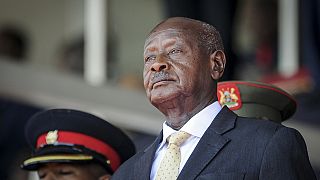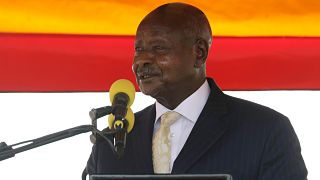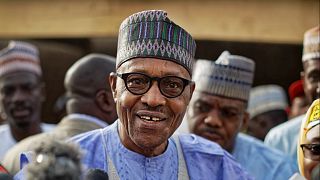Uganda
Paul Kalisha is stuck in Uganda’s dream to revive copper mining.
His father was a miner, and taught him the skill so he could take over when he dies.
The 13 million tonnes of copper available at the foothills of Rwenzori Mountains can run the mines for up to 20 years.
But Kalisha, 51, is losing track of the years, reminiscing the luxury he enjoyed growing up, which he can’t afford for his eight children.
“Time came and I married but up to now I am dwelling in a very alarming life where I can`t afford to buy food for my family and I can`t afford to take my children to better schools even when I am staying in the former residence of the mines”, Kalisha narrates.
The ripple effect of these mines extended to a town in the east, Jinja, where the smelting plant stood just next to the electricity source. The ore was transported by train.
These broken silos at Kilembe Mines Limited in Kasese, western Uganda, contain decades of shuttered dreams. Once a thriving sector, employing 5,000 people, it contributed 30 per cent to the country’s gross domestic product. Today mining in general contributes 2.3 per cent
With new policy and World Bank conditions, a lagging divestiture of the mines at the time the metal’s prices were falling, and rebel activity by the Allied Democratic Forces, the machines went silent.
Since 1982, when mining stopped completely, no developer has dug into the depths of these mines or blasted ore from the opencast except for a brief stint between 2013 and 2018.
“They started working as you have seen and as you will see in the other places, but they didn`t fulfill all the conditions. So, they had to leave and as I said when they left, because of their failures, they went to court and we first had to settle court before we resume procurement”, Fred Kyakonye, CEO, Kilembe Mines Limited explains.
In August 2022, the ministry of finance issued a procurement and disposal notice shortlisting seven bidders - China Railway No. 10, Gingko Energy, Jervois Global, Liaoning Hongda T/A Wagagai Mining, Montal-Engil Uganda, Sarrai Group, and Sinomine Power China) - who succeeded in the expression of interest for the development of Kilembe Mines, and listed eight companies that failed.
At the same time, the government released $1 million to revamp the mines before picking an investor. Most of the work done here is drainage of water from the pits.
As geologist Alex Kwatampora explains, “the underground is really in bad shape. It is flooded up to 4,300 feet above sea level. So, there is a lot of work to be done before we can say copper is going to be produced in February – that is not true.”
Asked to predict when production is likely to resume, Kwatampora explains that “I only see if a very good developer does a good job, in 2025. It is possible if he uses what is already there and actually repairs it but if he is to completely change the processing system then it can even take longer.”
New technology is expensive and a prospect must demonstrate the financial muscle of $360 million to be considered further.
This large stretch of mineralization extends to the Democratic Republic of Congo, where copper and cobalt hoard is accumulating following a standoff between China’s CMOC Group Ltd and the government (Bloomberg).
Kyakonye emphasizes that “there are a number of copper bodies but for Kilembe Mines, the copper which is there, is still economically minable or exploitable.”
Globally, cobalt, which was shunned then has now picked pace with more competitive prices. But there are also several alternatives to these metals.
Copper now costs $7,963 per ton.
There may be deposits elsewhere around the country, but here at Kilembe, copper ambitions rest on expertise and infrastructure.
Raziah Athman, for Africanews, in Kasese, Western Uganda










01:13
Uganda reopens border with M23-held eastern DRC
01:00
Pix of the Day: July 3, 2025
01:45
From Uganda to NYC: Zohran Mamdani's rise in American politics
01:22
Ugandan-born Zohran Mamdani declares victory in New York Democratic mayoral primary
01:21
South Africa buries unclaimed bodies of illegal miners
00:52
Botswana cuts back on diamond production amid weak global demand